What is the best affordable iPhone filmmaking kit?
The likes of Steven Soderbergh and Sean Baker have used iPhones to make great movies. It’s now a legitimate device to shoot professional quality films. However, they’d didn’t just unbox the phone and start filming. They added extra equipment to it.
There are microphones, camera apps, lights and lenses, grips and rigs, tripods and gimbals and more. Of course, there are companies lining up to take your money and, if you’re not careful, you could end up spending more than if you’d stuck to traditional filmmaking gear.
We’ve spent a lot of time hunting for the best gear at a range of prices. So check out the links above – we will be adding more lists as we go. And writing new articles if great affordable gear comes on the market.
UPDATE: There’s a NEW version of this article
There’s no one list that fits all situations
Thing is, the equipment you need will be determined by the kind of films or videos you are shooting. You might be shooting drama/fiction or documentary, you might be a vlogger or a mobile journalist, you might be shooting travel or sports/action videos. Each one will have a different requirement, although they crossover too.
Therefore, we can’t suggest a definitive list to suit everyone. But we can make suggestions to suit different needs. That said, when it comes to camera apps, one app will suit most needs:
Video camera app
How were directors like Soderbergh and Baker able to make the choice of shooting on an iPhone?
One major reason: the use of a special camera app to control the phone’s camera. Using the iPhone native camera app – which has been designed for consumer ease of use only – would not give you enough manual control to produce the high quality video they have achieved.
There are a number of apps, but the big game changer for iPhone filmmaking was an app called FiLMiC pro. The app will cost you $14.99 (if you live in USA – prices may vary a little according to your region).
So why should you purchase this app? Basically, it “turns your iPhone into a DSLR”. Well, that’s the sales pitch, anyway. The app will give you manual controls similar to shooting with a DSLR (or other camera with manual controls).
FiLMiC Pro allows us to manually expose and focus our clips. We can also use it to choose the resolution, the bitrate, set the white balance and the aspect ratio. So we’re now able to shoot 4k videos at 24fps (cinema standard) and 100Mbps in a wide aspect ratio.
Hidden extras: Cinematographer’s Kit – $13.99
The level of sophistication of this app stretches above most competitors. The Cinematographer’s Kit provides extra functionality, enabling you to shoot in log or flat colour profiles. However, please note that this is an extra in-app purchase.
Shooting Log/Flat is usually a feature that we find on cameras like Sony, Blackmagic, Canon Cinema, RED or Panasonic GH4/GH5. The theory is, when recording a flat image we capture more details and more dynamic range. We then have more options when it comes to grading and colouring.
Check out some other camera apps, including free ones.
Gimbals
While the iPhone’s inbuilt stabilization is getting better and better, gimbals are still useful for general filmmaking, vlogging and travel videos. If you want to get those smooth Steadicam style tracking shots with your iPhone, you can now achieve something pretty close with a $100 gimbal.
Read our Smartphone Gimbal Buyer’s Guide.
Read our list of the 10 Best Smartphone Gimbals for 2020.
For my own filmmaking purposes, I still have 2 x Zhiyun Smooth Qs. I’m shooting fiction/drama, so I generally use them for special shots like following a character who is moving, for example. Or, turning myself into a human crane, I can track then lift the camera into the air. I find them to be great devices and very flexible, with a bit of practice.
For about the same price, the DJI Osmo Mobile 2 and Zhiyun Smooth 4 are also still favourites with iPhone filmmakers. The new Zhiyun Smooth Q 2 and the DJI Osmo Mobile 3 are designed to be lighter and more compact. However, they may not be ideal if your iPhone+extras weighs more than 200 grams.
Tripods
If you want to have your camera completely still, then you’ll probably need to use a good old photographer’s tripod. There’s no real difference to setting a regular camera one one, except your iPhone will obviously be lighter. This means your tripod might not need to be as weighty as you would need for a DSLR or bigger camera.
This Manfrotto tripod will probably be sturdy enough.
Mounting an iPhone onto a Tripod
The main challenge is mounting your iPhone onto a tripod. As iPhones do not come with a screw mount, you need to buy a clamp which does. There are many choices at a range of prices. As a device, they’re not complicated pieces of equipment, so they don’t need to be expensive. The one is good and very affordable.
Manfrotto Universal Smartphone Clamp
As well as a tripod, Manfrotto have a great option for mounting your iPhone to it. This is the pro version with a lock mechanism for extra security. But they also do a cheaper more basic spring-action clamp.
This one actually has a double lock mechanism: a spring lock and a side lock.
Shoulderpod SD

The Shoulderpod Professional Smartphone Rig is an all-in-one tripod mount and stabilizer solution. Not only does it function as a tripod mount, but it also works as a handheld grip and standalone tripod/traveller stand.
Joby GorillaPod Mobile Rig
Joby are one of the best makes of small tripods for smartphones. This tripod setup is a great tool for smartphone filmmaking. The bendy legs enable you to stand your iPhone in a variety of situations. There are cheaper versions but the Joby is robust and built to last.
The extra arms and mount allow you to add up to 3 additional devices like mics, lights and action cameras via 1/4-20 connections. You can also pulls the legs together and use them as a handheld grip.

Find the Joby GorillaPod Mobile Rig on Amazon
Take a look at more of our suggestions for Best Tripods for Smartphones.
Grips and Rigs
If you want to smooth out your handheld shots more, you might think about getting a grip or rig to attach to your iPhone. They’re generally simple devices which add more comfortable hand grips. However, they also add weight and distance between your hands which also helps to steady the camera.
Depending on the model, you can also use them to mount microphones, lenses and lights. One of the most popular manufacturer’s of grip and rigs for iPhones (and other smartphones) is Beastgrip. This company provides an extensive range of equipment (including lenses) up to bigger rigs for DSLR and more heavyweight pro cameras.
However, they’re not the cheapest products. So you might want to look at the many alternative grips and rigs on the market, which come at a more competitive price.
Check out our suggestions for the Best Grips and Rigs for Your Smartphone.
Microphones
iPhones have great inbuilt microphones. But they aren’t idea for recording the spoken voice (unless you can get the iPhone mic very close to the mouth of the person speaking). If you are intending to record speaking then you’ll probably want to add an external mic.
Before you start looking at different mics, you might want to read our beginner’s guide to microphones.
Directional Mics
For many voice recording situations, a directional microphone is ideal for capturing clear audio. And the most directional mic of all is a shotgun mic. Directional mics are used by pointing the mic at the source of the audio you want to capture.
Some of these mics can be mounted to your iPhone. Others can be mounted to the grip on which you have mounted your iPhone. But for drama/fiction, or even documentary filmmaking, you will probably need to look at having a separate mic+boom+recorder+sound-recordist set up.
Read our list of the Best Affordable Shotgun Mics.
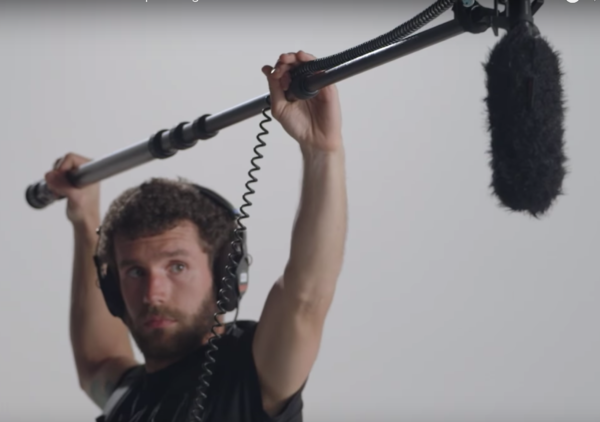
I’ve used the phone-mounted shotgun mic for some scenes, when filming actors. I also sometimes have it running as a backup option. So, when I come to edit, I have both the audio from the boom and from the phone-mounted mic to choose from.
Sometimes the phone-mounted mic will get a better sound (perhaps the boom mic caught a knock, or was too far away). Then the phone-mounted mic audio can be used to save the day (or save you from having to dub the audio later).
Best Smartphone & iPhone Kit for CINEMATIC VideoClip On Mics
Clip on Microphones are otherwise known as “lavalier” microphones or lapel clip-on mics. These mics are “omnidirectional”, which means they record audio from all directions. They are small mics you clip onto your subject’s body, usually on their lapel or collar.
If you are filming a video that features a lot of interviews, it’s a good idea to have one or more lavalier microphones in your filmmaker kit. The great thing about a clip on mic is once it’s set up you can mostly forget about it when filming.
Due to their size, a clip on mic can be discreetly and strategically placed close to someone’s mouth. This enables you to capture their voice clearly, reducing background noise. The aim is to hide the mic in the subjects clothing so the interview footage seems more natural.
Read our guide on How To Use a Lavalier Microphone
One popular choice is the Rode smartLav+ Lavalier Microphone.
Rode smartLav+ microphone on Amazon
Alternatively, check out the PoP Voice Lavalier. This is also a wired mic with a good length cable. It’s basic, does the job and works with Apple, iPhone, Android and Windows.
PoP Voice Professional Lapel mic for iPhone on Amazon
PowerDeWise Lavalier Lapel Microphone on Amazon
Of course, clip on mics are used when filming actors, too. However, if an actor needs to move around it’s generally preferable to use a wireless connection from mic to recorder.
Wireless Clip on Mics
When looking at a wireless version of the clip on mic, be prepared for the jump in price. But if you want that versatility for filmmaking with actors, you might want to invest in one of these.
The Pixel 50-Channel Professional UHF Wireless Lavalier Microphone System has a great quality for the price. They claim an operating range of over 330-feet (100m) in open areas. There’s a WM-9 and a WM-10 and the only difference seems to be that the WM-9 is 2 mics, while the WM-10 is 3 mics.
Alternatively the Movo WMIC50 2.4GHz Wireless Lavalier Microphone System is designed for portable wireless operation, such as film work, podcasting, performances and other audio or video applications. Audio input/output: 3.5mm. Transmitter and receiver are each powered by two AAA batteries (not included) which provide 3.5-4 hours of run-time. So you will be eating a lot of batteries with these.
Read more: 7 Best Affordable Wireless Lav Mic Kits
Lenses
Cameras on smartphones have transformed the way we make and share images and videos. The cameras on recent iPhones have been the best around on smartphones. What about giving yourself extra options with lens attachments? Because even smartphones with multiple fixed lenses aren’t suited to every subject or situation.
When buying a lens attachment for your smartphone, it’s important to remember there’s a limit to what they can really achieve. You are not replacing the existing lens on your smartphone, but adding an extra lens on top. That means light will be passing through both lenses on it’s way to the camera sensor. Due to this, there is a reduced amount of light hitting the sensor (something to bear in mind in low light situations).
Another thing to bear in mind is that these lenses vary in quality. Still the king of all smartphone lenses for a cinematic look is the Moondog Labs anamorphic. This is the lens which famously persuaded Sean Baker to shoot the game-changing Tangerine, which was a hit at Sundance.
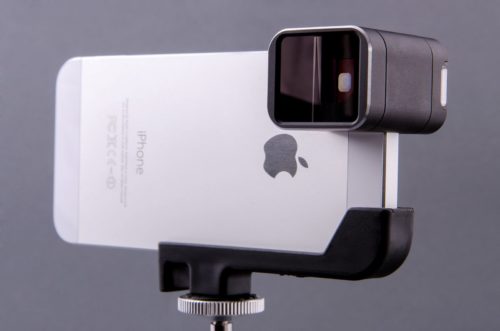
If you’re interested in adding a lens to your iphone filmmakers kit, check out our Best Smartphone Lenses article.
Lights
As we look to get more and more from our smartphone camera, one accessory which we can use to improve our photography is some form of extra lighting.
But unless we have a large crew and budget, we cannot usually afford a big professional lighting rig. Luckily, there is now a wide range of small, lightweight lighting options at an affordable price.
For MoJo, documentary, vlogging and interview situations, 1 or 2 a small LED lights mounted to the top of the camera might be all you need.
Read more: Best small lights for video & filmmaking
For more complex lighting needs, where you want to place lights at certain angles to light a drama/fiction scene with actors, you might have to explore other options. Depending on what you are hoping to achieve, lighting is where things can really escalate in terms of crew and equipment needed.
For low-budget guerrilla filmmaking, my advice is either use existing lighting available or bring small lights to compliment a scene rather than build complex lighting arrangement. Even a photographer’s reflector (or simply something white or silver to reflect light with) can be used to bounce some existing light in the right direction. Perhaps a small light can be placed strategically to fill or highlight an actor who would otherwise be too dark.
Find out our choices for best lights for smartphone filmmaking.
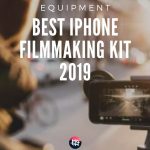
You can find our FULL KIT LIST here.
Read next: The Ultimate Beginner’s Guide to Smartphone Filmmaking
Eager to learn more?
Join our weekly newsletter featuring inspiring stories, no-budget filmmaking tips and comprehensive equipment reviews to help you turn your film projects into reality!
As an Amazon Associate I earn from qualifying purchases.
Simon Horrocks
Simon Horrocks is a screenwriter & filmmaker. His debut feature THIRD CONTACT was shot on a consumer camcorder and premiered at the BFI IMAX in 2013. His shot-on-smartphones sci-fi series SILENT EYE featured on Amazon Prime. He now runs a popular Patreon page which offers online courses for beginners, customised tips and more: www.patreon.com/SilentEye


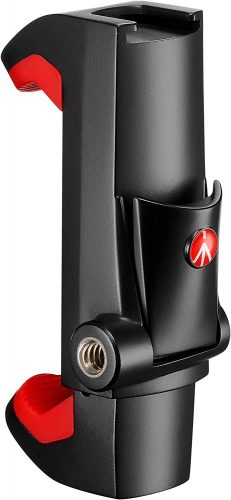
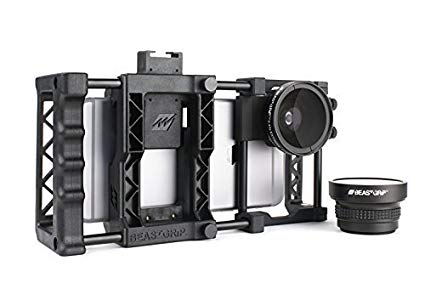
Great List, as we’re about to start shooting vlogs.